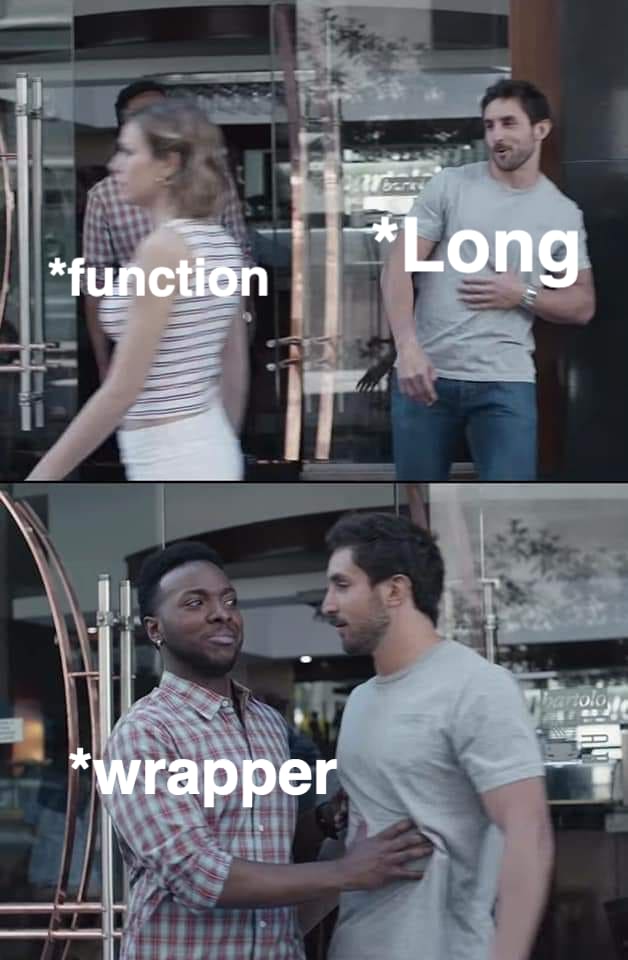Kotlin's data class is a fan favorite when it comes to store any model. Bundled with bunch of necessary methods, devs get a lot while writing way less. From Kotlin 1.5 — we have value class-s. Let's see what is a value class and where to use it.
While data class is used for holding model , value class adds attribute to a value and constraint it's usage. This class is nothing but a wrapper around a value, but the Kotlin compiler makes sure there is no overhead due to wrapping.
The problem
Duration is a classical problem where anyone can make mistake, if they didn't read between the lines. So, I wrote a function to show a tooltip message for given duration in millis. The signature looks like this.
fun showTooltip(message: String, duration: Long) { ... }
To make sure the caller pass in correct duration, I can do this.
fun showTooltip(message: String, durationInMillis: Long) { ... }
even this,
/**
* Shows tooltip of message for given duration
* @param message - message to display
* @param durationInMillis - duration in milliseconds
**/
fun showTooltip(message: String, durationInMillis: Long) { ... }
Despite all the naming and documentation, someone can invoke the tool tip with seconds. After all NASA lost a spacecraft due to a unit mistake.
showTooltip("I'm going to pass duration in seconds", 2L)
A no-brainer solution
To make sure, the user pass in millseconds, the duration can be wrapped in a class, and retrict the object creation to few meaningful helper methods, this wrapper class can make sure proper value passed in to the method.
class Duration private constructor (
val millis: Long
) {
companion object {
fun millis(millis: Long) = Duration(millis)
fun seconds(seconds: Long) = Duration(seconds * 1000)
}
}
fun showTooltip(message: String, duration: Duration) {
println("Will show $message for ${duration.millis} milliseconds")
}
...
showTooltip("Hello - Seconds", Duration.seconds(2L))
showTooltip("Hello - Millis", Duration.millis(1200))
...
Now the showTooltip function takes in Duration and process it in millis. This ensures the caller send proper duration to the function and showTooltip can rely on the Duration#millis field.
However, for each duration usage, we box it inside a object, just to avoid communication gap. To pass in a parameter, a new object is created and allocated in memory.
Enter kotlin - value class
The Kotlin value class wraps a single value and thus impose any restriction/conversion to it. Kotlin compiler takes away the boxing in possible cases to deliver performance.
@JvmInline
value class Duration private constructor (
val millis: Long
) {
companion object {
fun millis(millis: Long) = Duration(millis)
fun seconds(seconds: Long) = Duration(seconds * 1000)
}
}
We don't see much difference but just two new keywords. But under the hood, a normal Duration class and value class is different altogether. I'm leaving the value class byte code here. In case you wonder how the normal class looks in bytecode, read through this and then reach to ByteCode of normal wrapper section.
// Duration -- value class bytecode
public final class Duration {
private final long millis;
private Duration(long millis) {
this.millis = millis;
}
public static final class Companion {
// Comapanion that outputs Duration is mangled to return the wrapped value
public final long millis_PZfE49U/* $FF was: millis-PZfE49U*/(long millis) {
return Duration.constructor-impl(millis);
}
// Comapanion that outputs Duration is mangled to return the wrapped value
public final long seconds_PZfE49U/* $FF was: seconds-PZfE49U*/(long seconds) {
return Duration.constructor-impl(seconds * (long)1000);
}
}
}
// Caller function name mangled
public static final void showTooltip_fxiZ0zM/* $FF was: showTooltip-fxiZ0zM*/(@NotNull String message, long duration) {
...
}
...
// Invoking the function that consumes value class param.
showTooltip_fxiZ0zM("",
Duration.Companion.millis_PZfE49U(2000L));
showTooltip_fxiZ0zM("",
Duration.Companion.seonds_PZfE49U(2L));
As you see, where ever the Duration object used, the function names are mangled and the param // output type changed to Long.
In case you wonder why the mangling is needed here, this avoids any conflict resolution when the function signature matches the wrapped type.
// Using a wrapped value arg
fun showTooltip(message: String, duration: Duration) {...}
// Using a primitive value as arg
fun showTooltip(message: String, duration: Long) {...}
If the compiler just replace the param type with wrapped primitive here, the code won't compile. So it is necessary to mangle up the name.
ByteCode of normal wrapper
public final class Duration {
private final long millis;
private Duration(long millis) {
this.millis = millis;
}
public static final class Companion {
// Companion function return the wrapped object
public final Duration millis(long millis) {
return new Duration(millis, (DefaultConstructorMarker)null);
}
// Companions function return the wrapped object
public final Duration seconds(long seconds) {
return new Duration(seconds * (long)1000, (DefaultConstructorMarker)null);
}
}
}
// Called function signature looks same
public static final void showTooltip(String message, Duration duration)
{ ...}
// Caller is
showTooltip("", Duration.Companion.seconds(2L));
showTooltip("", Duration.Companion.millis(1200L));
That's what a normal wrapper class look like. In case you wonder why did I use a normal class instead of a data class. See below.
data class Duration private constructor(
val millis: Long
) {
// Same companion as normal class
}
public final class Duration {
private Duration(long millis) {
this.millis = millis;
}
public final long component1() {
return this.millis;
}
@NotNull
public final Duration copy(long millis) {
return new Duration(millis);
}
// Same companion byte code from normal class
...
}
data class creates a copy method, which allows you to create Duration given a long param. Our goal is to restrict the object creation to the companion methods. Also data class leaves a componentN function, which we don't need in this case. We're just trying to wrap the value here.
Endnote:
Since Kotlin 1.2.xx, we have inline classes, the old name for the value class. Since the class is not actually inlined in comparison to the inline function, it has been renamed to value class and the inline keyword is deprecated now.







Top comments (2)
👍💙
Indeed an valued article thanks for the infos 👌